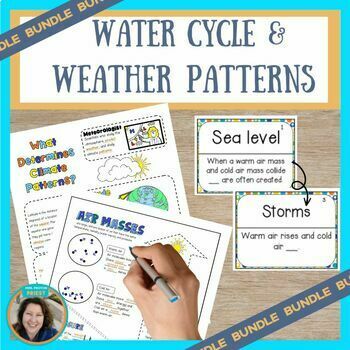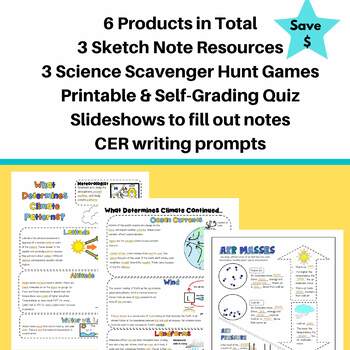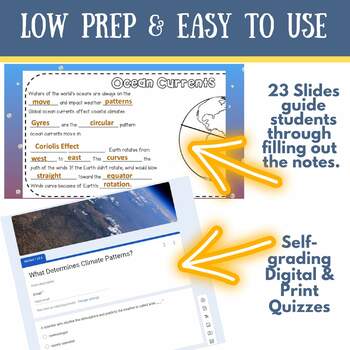Water Cycle, Air Masses, and Climate Patterns - Weather Middle School Science
- Zip
- Easel Activity
What educators are saying
Products in this Bundle (6)
showing 1-5 of 6 products
Description
Are you looking to save money by purchasing a bundle of climate and weather patterns sketch notes and science scavenger hunt games? Save 20% by purchasing these popular middle school weather and climate resources as a bundle.
Click the PREVIEW to see what is included.
This middle school weather and climate science bundle includes 6 resources:
Atmosphere & Water Cycle Doodle Sketch Notes MS-ESS2-4
Air Masses Doodle Sketch Notes MS-ESS2-5
What Determines Climate Patterns Doodle Sketch Notes MS-ESS2-6
Science Scavenger Hunt: Atmosphere, Water Cycle, & Air Masses
Science Scavenger Hunt: Air Masses and Weather Fronts
Science Scavenger Hunt: What Determines Climate Patterns
I LOVE MY FOLLOWERS!
Click on the green ★ to follow my store and get notifications about new resources and freebies!
Thank you for visiting my store! Happy Teaching!
Let's Connect!
Mrs. Proton Priest on Facebook
Mrs. Proton Priest on Pinterest
WOULD YOU LIKE TO EARN FREE PRODUCTS?
To earn TPT credits to use on future purchases:
Go to your My Purchases page. Beside each purchase, you'll see a Provide Feedback button. Leave a rating and leave a short comment on the product. You can check your credit balance on your TpT Credit Balance page. Apply credits towards future TpT purchases in my store, or any TpT store. I value and appreciate your feedback!
****************************************************************************************
Copyright © Ginny Priest, Mrs. Proton Priest. All rights reserved by the author.





